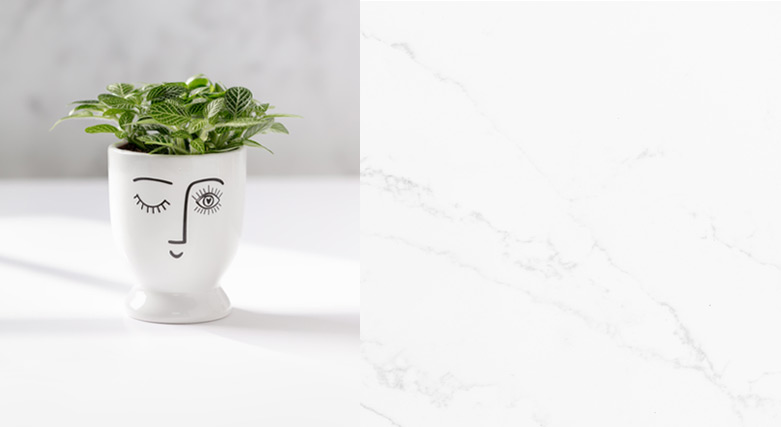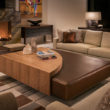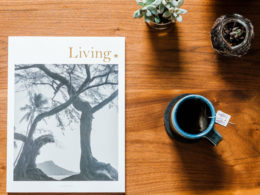What Is a Client Questionnaire?
A client questionnaire is a document that is shared with a potential client which consists of a list of questions to help the designer understand the requirements of the client, and also helps the client understand their needs better.
Why Do You Need a Client Questionnaire?
Most designers believe that having a client questionnaire sent out to potential clients before the actual consultation can be hugely beneficial for both the designer and the client. Reasons include:
- It helps weed out the indecisive clients from the ones who are actually committed to following through with the project. Many designers suggest that people who cannot spare 20 minutes to fill out the questionnaire can be impatient and really hard to work with. But on the other hand, keep in mind that some clients can be really busy and just want you to handle their project for them without having to go through pages of questions. So try and keep the questionnaire short and concise.
- It gives the client a chance to really think about their ideas for the project and assess whether it is indeed the right time to proceed with the project.
- It gives you, the designer, a fair idea about what kind of client and what kind of project this is going to be. The answers in the questionnaire will help you determine what further questions must be asked during the consultation meeting.
- It gives you an idea about the personality, likes, and dislikes of the client.
- It gives clarity on whether this is a project you want to undertake.
When and How to Send a Client Questionnaire?

Client questionnaires are usually sent to a potential client, after the first contact or discovery call with the interior design company. Many designers recommend sending out the questionnaire soon after they book the meeting with the designer. This questionnaire must be filled and submitted to the designer before the design consultation.
Client questionnaires can easily be created on Google forms or JotForms. Keep in mind that some clients may not be tech-savvy enough to fill out online forms. In such cases, you can even send out Word documents, fillable PDFs, or even emails for them to reply to. Also, have the option where they can print out the questionnaire, fill them manually, and return scanned (or photographed) copies to you.
What Questions to Include in a Client Questionnaire?
The questionnaire should reflect the most important aspects of the project which will help you determine whether this is your ideal client and whether you are the right fit for them. Essentially, the questionnaire should contain five parts which should more or less summarize the project in a nutshell. They are personal details, space and utility details, client preferences, timeline and budget, and questions for the designer. Let us look at some questions for each of these sections.
Personal Details
1. Names and permanent address.
2. Project Address
Keep in mind that this address may be different from their current address.
3. Contact Details
Collect telephone numbers and email ids. When they oblige, email is the preferred way of communicating with clients as it is easy to track communication. It also allows you to be more thorough than text messages and phone calls. Finally, it keeps your phone free of never-ending calls and messages, both of which can make you frazzled. Make sure you know who wants to be on the receiving end of your emails if you are dealing with a couple.
4. How did you hear about us?
Provide selection options such as Google search, social media, media mentions, Houzz, word of mouth, and any other platform that you have a presence on. This data will help you with your marketing strategy.

Space and Utility Details
1. What are the spaces that you want designed?
Provide checkboxes which include bedrooms, bathrooms, kitchen, living room, basement, entryway, bar, whole house, etc.
2. What do you wish to achieve?
Ask whether they are looking to renovate, rebuild, upgrade, make an addition, provide a facelift, or whether it is a new build just needing furnishing.
3. Will I be collaborating with an architect and/or contractor? If so, who is already working with you on this project?
This answer will allow you to understand the scope of your work in the project and assess how much time you will need.
4. What do you currently use the space(s) for?
Encourage them to think of all the uses for a space. For example, if it is a bedroom, do they also use it to watch nighttime television? If it is a living room, does it also get used as a game room?

5. Who uses the space(s)?
This helps you understand the members of the family and their ages. Will the space need to be kid-friendly, or pet-friendly, or wheelchair accessible?
6. What style would you describe your current space as?
List options such as traditional, modern, farmhouse, transitional, mid-century, etc. Also, let them know that it is alright if they cannot fit their current space into a checkbox and that you will help figure it out for them.
Client Preference Details
1. What do you like most about your current space?
The answer to this question is an easy way to understand the client’s preferences in their new space. The answers may be anything from paint color to open plan design, to large windows.
2. What do you dislike most about your current space?
Again, pay close attention to this answer as this gives you an insight into the client’s preferences. It may be a particular color because it reminds them of something traumatic, or the lack of a view, or too many walls.
3. Are there any specific interiors that you particularly like?
This could be a museum, library, hotel, or even a friend’s house. These are clues to the likes and dislikes of the client, and will help narrow down their preferred style.
4. Do you have some inspirational images for your new space?

Allow the option to upload some images or share links to a Pinterest board or Houzz ideabook.
5. What is the role of this residence?
Give the options of whether they plan to live there, flip it, sell it, rent it out, or use a portion of it for an Airbnb. Each option would require different planning.
6. Are there any items in the space that you wish to remain in the final design?
Sometimes clients are emotionally attached to objects or artworks, for their sentimental value.
7. What are your favorite holiday destinations, hobbies, and pastimes?
This helps the designer understand the personality of the client. For example, if their favorite pastime is reading, then consider creating a reading nook. Or, you can try and bring elements of their favorite holiday destination to their space – from light beachy vibes to woody ski cabin atmospheres.
8. Have you worked with an interior designer before? What did you like or dislike about the process?
This is another question that provides a glimpse into the personality of the client. You may be their first designer, in which case, you will need to educate them about how the process works. Or, you may be their Nth designer, in which case, you need to assess whether this is a red flag. If someone has gone through too many designers then, there might be a personality issue with the client, as they may be highly impatient, unreasonable, have difficulty making decisions, or have financial issues.
Project Timeline

1. How soon do you want to start the project?
Provide options such as immediately, next months, or after a few months. Should you choose to proceed with the project, this information will help you decide whether your calendar is free to accommodate this project.
2. How soon do you want the space to be completed?
Ask if they want the design to be completed in one go, or in phases. This will help you understand whether the timeline is a practical one and if so, help you plan your upcoming projects better.
3. How much creative involvement do you wish to have in this project?
If the client wishes to be completely involved at every step of the way, this could delay the project. Ask whether they would have someone else whose inputs they would be seeking during the project, such as a daughter or a “creative friend”. These elements could mean delaying design decisions and pushing the timeline.
4. What kind of service do you expect from your designer?
Consider providing options for e-design, design, or full-service design with procurement and project management. Include only the options that you are comfortable doing.
Budget

1. What is the approximate investment for your project?
Many designers recommend that you keep the word “budget” out of the questionnaire, as it can seem overwhelming to most clients. Instead, use the word “investment” which implies that the money spent is towards a better future (which it is!). Determining an appropriate budget will also help you decide whether this is a job you want to take on. But do not jump to conclusions because many times, clients need to be educated about pricing, and then, more often than not, they are open to a flexible budget.
2. Where do you generally shop for furniture?
Encourage them to provide names of stores or online retail stores. This answer will give you an idea about the price range of furniture that they are comfortable with. It will also give you an idea about how much you need to educate your client about pricing.
3. Who will be taking the financial decisions for the project?
This answer is important as it will show who is responsible for funding the project, and, in turn, for paying you your fees. Insist that if it is not the client themselves, the person making financial decisions be present for the design consultation and must sign off on the proposal and contracts as well.
Questions for the Designer

Each client is different, so there may be times when you have missed out on asking a very important question. This section allows the potential client to come clean about any expectations they have from you, and if there are any questions that you missed out on asking in the questionnaire. These questions allow you to be better prepared with your clarifications regarding their apprehensions.
- Do you have any apprehensions about working with an interior designer?
- Is there anything else I should know about you or your space before we get to the design stage?
Conclusion
A client questionnaire is a beneficial tool for both the designer and the client. As a designer, you are given a sneak peek into the personalities of the clients and the basic scope of the work which will help you assess whether you are the right fit for the job and whether the clients will be compatible with your design process.
The benefit to the client lies in the fact that with the basic questions out of the way, they can have a much more productive and effective consultation meeting where they can get straight to the design discussion. See that you keep the questionnaire limited to a few pages so that the clients don’t get overwhelmed.
Are there any other questions that you think should be included in a client questionnaire? Let us know in the comments below. We value your feedback and update our articles to reflect suggestions made by our readers.










